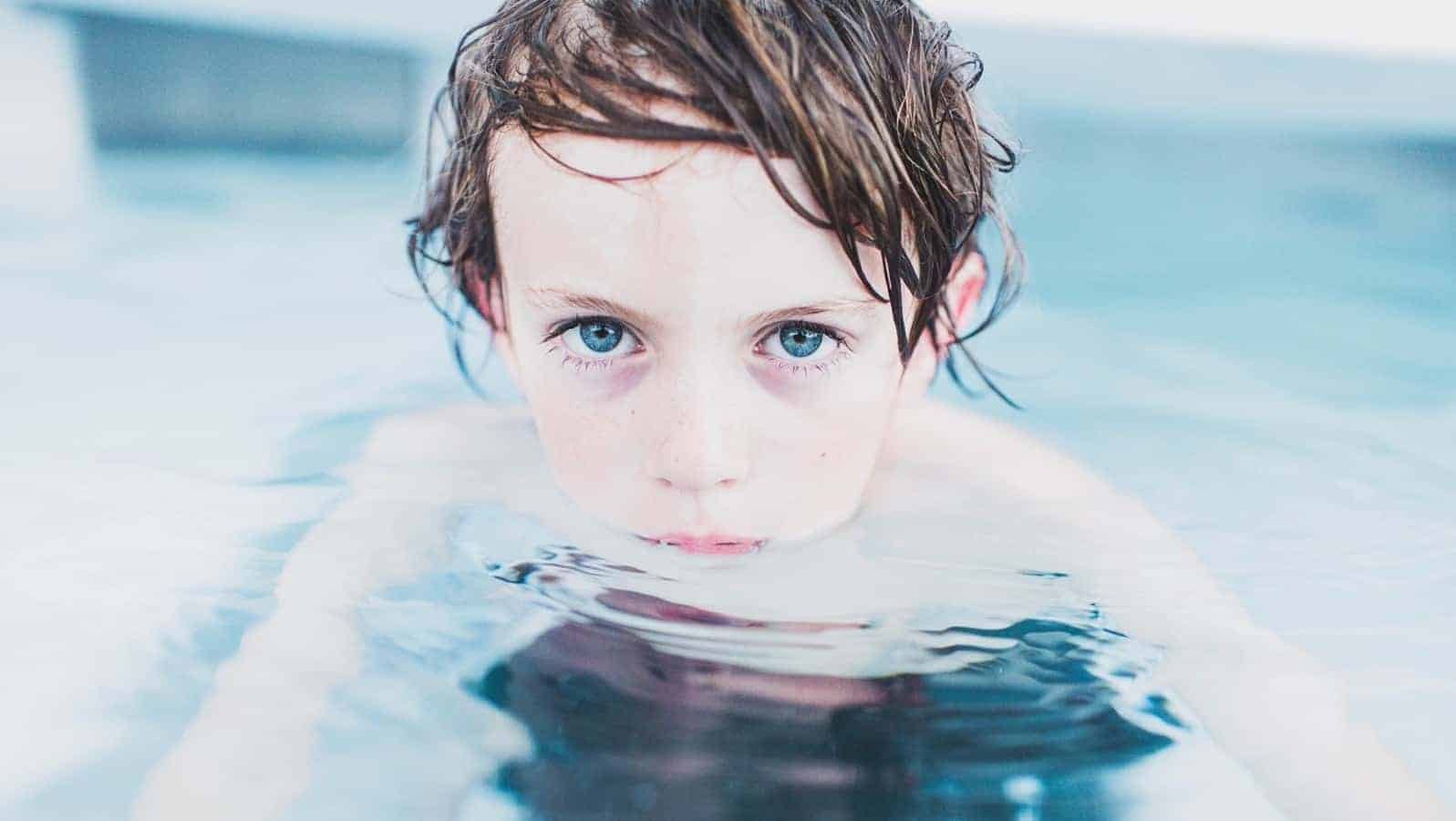Dry drowning is an emergency that requires immediate medical attention. This emergency occurs after spending time in the water and might not be evident right away. It can result in death, but knowing the symptoms can lead to getting treatment right away.
Most people know what it looks like when someone starts drowning in the water. However, many people don’t know what dry or secondary drowning looks like and how to treat it or prevent it. Since the threat of drowning doesn’t end after leaving the water, it is essential to be vigilant.
Dry drownings are rare, but you never know when a terrifying situation can occur. Taking steps to prevent it and knowing the signs are essential and can save a life. This drowning situation typically occurs when someone has submerged underwater, and the risk increases if they’ve been saved from drowning.
Don’t let worry hold you back when you want to enjoy the water, but keep water safety in mind. Once you know the signs, treatments, and how to prevent dry or secondary drowning, you’ll feel better and worry less. Remember that this type of drowning is rare, so don’t let the fear overwhelm you.
What Is Dry Drowning?
Dry drowning is a type of drowning that happens when someone takes in a small amount of water, and the water causes a spasm. The muscle spasm makes the airway close up, resulting in this dangerous situation. The muscles constrain to protect your lungs, but it poses further issues rather than alleviating the event.
Dry and secondary drowning, or what doctors call post-immersion syndrome, is rare. It causes the vocal cords to close up over the windpipe, resulting in a laryngospasm. The laryngospasm could be severe, preventing oxygen from getting in or out, or it could be mild, resulting in difficulty breathing.
Laryngospasms increase pressure in the lungs and heart. It also reduces the ability to take in oxygen and circulate it. Even a few droplets of water hitting the larynx can trigger a laryngospasm, and it can occur from high-speed submersion on a water slide or from jumping or falling into the water.
A lack of oxygen to the brain is the main cause of death or injury during drowning, and this applies to dry drowning, too. Sometimes, if there is fluid in the lungs, an infection can set in and cause death, however.
This type of drowning is more likely to occur when a person has had a water drowning incident. For children, it most frequently happens after they’ve been underwater because they don’t know to avoid water inhalation. No matter how long someone was submerged, seek medical advice immediately to be safe.
What Are the Symptoms of Dry Drowning?
While dry and secondary drowning is scary, there will be visible and noticeable warning signs. If you notice the signs of dry drowning soon enough, there is time for medical treatment. Some symptoms might not be as evident, and young children might be unable to communicate a problem.
Be vigilant and keep an eye on your child. If you notice any differences, pay attention and watch for the following symptoms:
- Persistent and Unexplained Coughing: Anytime someone has a persistent cough after swimming and didn’t have one before, they should get medical treatment. If the cough continues for more than 30 minutes, it is a sign of difficulty breathing or water in the lungs. The cough will be dry and won’t ease even after drinking water.
- Difficulty Breathing: If a person has trouble breathing after water inhalation, it isn’t a good sign. They might exhibit rapid, shallow breaths and feel like they aren’t getting enough air.
- Increased Effort to Breathe: Flaring nostrils and seeing the space between the ribs when someone inhales shows an increased effort to breathe. When these symptoms occur, it is a sure sign that they aren’t receiving enough oxygen.
- Fatigue, Low Energy, Or Sleepiness: One of the first symptoms that people experience is low energy after swimming. While sleepiness often occurs due to overexertion from swimming, it could also indicate that oxygen circulation is cut off. Avoid sleep for a while after being in the water, especially after a water incident.
- Vomiting: Throwing up indicates a lack of oxygen. When vomiting occurs after getting out of the water, it is a sign that medical attention is necessary. If vomiting accompanies other symptoms, treatment should begin immediately.
- Chest Pain: When chest pain occurs with other symptoms, it is a sure sign of issues with the airways. Chest pain typically occurs with coughing and difficulty breathing. The chest pain starts as mild discomfort, and the pain worsens until the condition is treated.
- Irritability: When the brain doesn’t get the oxygen it needs, it can cause irritability and sudden mood swings. The irritability will likely occur with fast breathing and a racing heart.
- Difficulty Speaking: Dry drowning causes the vocal cords to close, so speaking will be harder or impossible. When they can’t talk, it means that oxygen likely isn’t getting through, either. If this symptom is present, the victim should seek medical care right away.
- Unusual Behavior or Forgetfulness: If someone’s behavior changes after swimming, pay attention to them and watch for other symptoms. They might also exhibit forgetfulness when they typically don’t have that problem. In some cases, the victim will be confused and unable to acknowledge verbal instruction.
- The Person Required a Water Rescue: If someone gets pulled from a pool or body of water after a water incident, they might experience dry or secondary drowning. Anytime someone has a near-drowning experience, the person should receive a professional examination from a medical provider.
What’s The Difference Between Dry Drowning Vs. Secondary Drowning?
Dry and secondary drowning are similar, but there are some differences.
| Dry Drowning vs. Secondary Drowning | |
| Symptoms typically begin with an hour | Symptoms can start up to 24 hours later |
| Water never reaches the lungs | Caused by accumulated water in the lungs from swimming |
| Causes vocal cords to spasm and blocks airways | Typically causes pulmonary edema |
How Is Dry Drowning Treated?
Dry and secondary drowning each requires emergency treatment, so getting help right away is essential. Don’t wait to see if the victim’s condition improves, and call for emergency medical assistance rather than having someone else drive. Medical treatment can begin as soon as paramedics arrive, and every minute counts.
If you can, as you wait for medical help, ensure that the victim:
- Remains calm to avoid further muscle tension
- Stays in a supine position, lying with their face upwards
- Turns their face slightly to the side to allow water to drain from their mouth or nose
Once the victim gets help, the following treatments will occur:
- Stop the process by removing water from the airway or lungs
- Stabilize vital signs by opening the airway
- Increasing blood flow to the lungs
- Ventilator or respirator
- Medical observation to ensure regular breathing resumes
In severe cases, the following treatment might be necessary:
- Resuscitation
- Oxygen treatment
- Breathing tube
Can Dry Drowning Be Prevented?
While you can prevent dry or secondary drowning, accidents can still happen. The victims of most drowning deaths each year are children younger than 15, so many prevention methods apply to kids. Prevention tips are the same as those for regular water drowning, with a few exceptions.
Here are essential tips on how to prevent dry drowning:
- Supervise children in the water and after they get out, even if they know how to swim
- Sign yourself and your kids up for swim lessons and learn to avoid breathing in water
- Practice water safety and use flotation devices in deeper water
- Never leave standing water where children are unsupervised
- Learn CPR in case an incident occurs in your presence
- Don’t swim alone
- Pay attention to the weather if you are swimming outside
- Look for hazards in the swimming area before entering
- Don’t leave children alone around water, even for a minute
- Be aware of waves in a lake or ocean
- Don’t drink alcohol around water, whether you’re going in or watching others.
- Avoid entering the water when you’re injured.
- When in natural water, know the depth, temperature, and if any dangerous currents exist
- Keep approved flotation devices on all boats and watercraft
- Don’t swim while you’re fatigued
- Make sure pool gates remain closed at all times
Final Thoughts on Knowing the Dry Drowning Symptoms, Treatment, and Prevention
Dry drowning is a scary accident, but recognizing the symptoms and seeking treatment right away can prevent death. Plus, knowing how to prevent dry or secondary drowning can help you avoid the situation altogether. Even with the best prevention methods, though, you should learn to recognize the symptoms.
After water submersion, watch for symptoms, and as soon as one occurs, call for emergency services. Don’t try to wait it out, and don’t assume that it’s nothing. It is always best to be safe and seek treatment for dry drowning, even if you aren’t sure.
Don’t let the fear of dry or secondary drowning keep you away from the water, even if it is worrisome. It is a rare situation, and if you stay vigilant, the risk is low. Enjoy a day in the water and rest easy knowing that you understand the symptoms, causes, and ways to prevent dry drowning.














